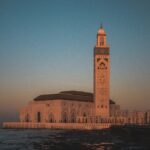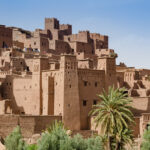The palace of Albahia built under the restrictions of Ahmed Ben Moussa, he was known by (Ba Hmad). He was hired the most skillful and crafty builders and artisans to work in the palace. Unlucky of him, Ba Hmad died before finishing the palace. Bahia palace is named after the wife of Ba Hmad, as an expression of his love to his wife. The palace receives many visitors each day. It is amazingly hooking the attention of the visitors with its Gardens and the good looking designs.
Agency Location
- DR, 590 Bd Bouakkaz, Marrakech 40000
Phone Number
Email us
- © 2022 deserttourinmorocco.com All Rights Reserved.


